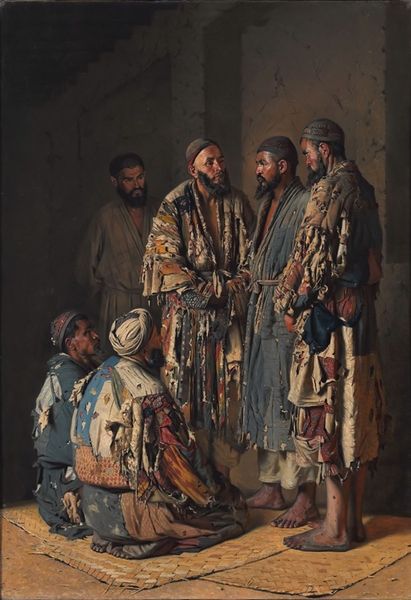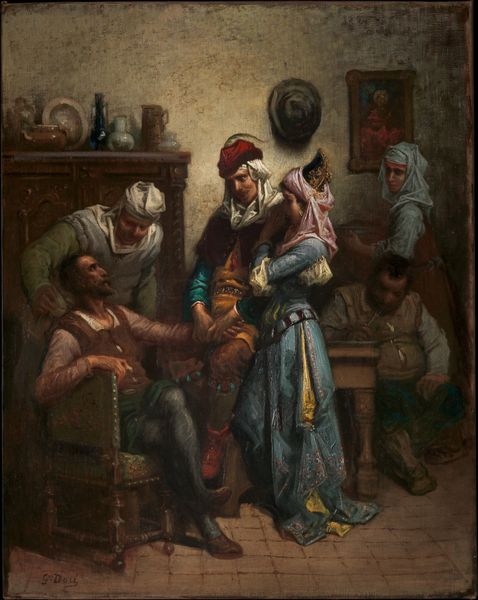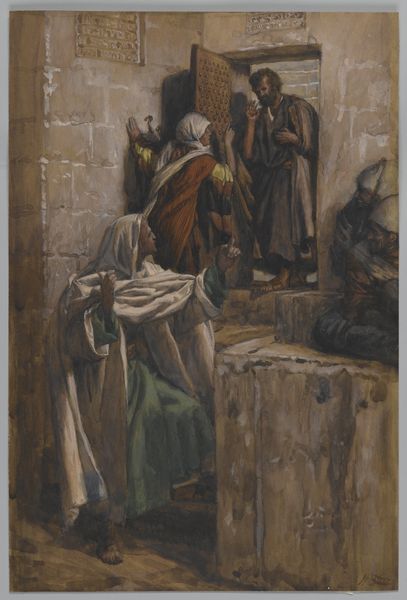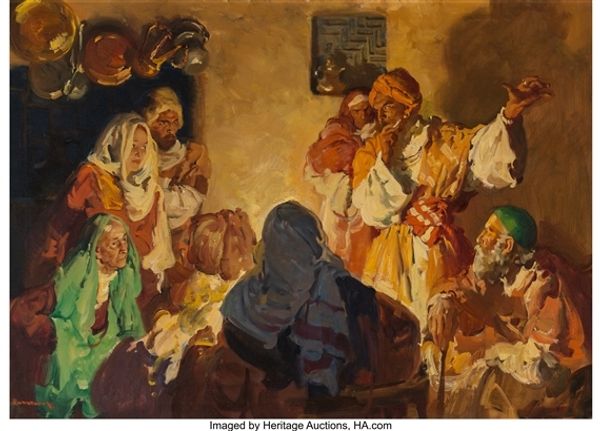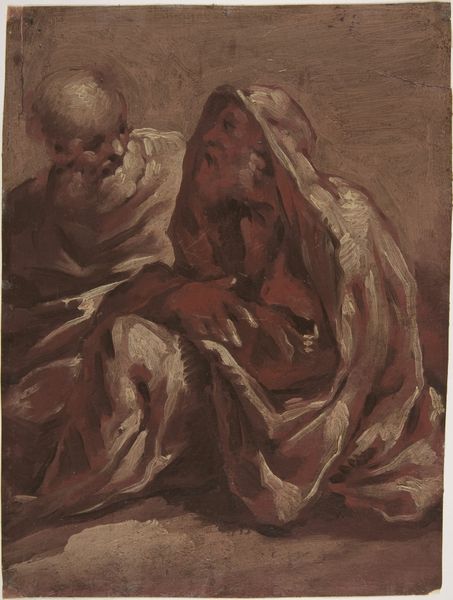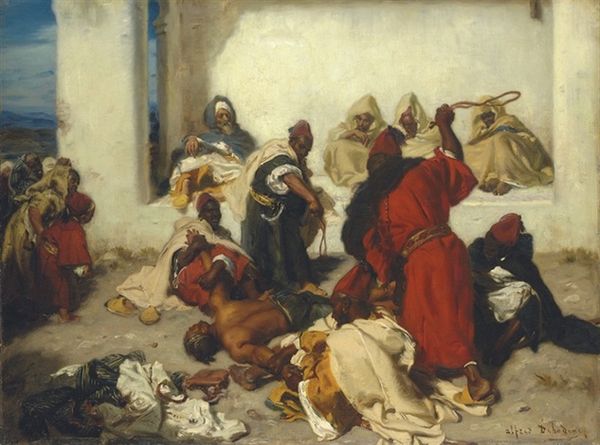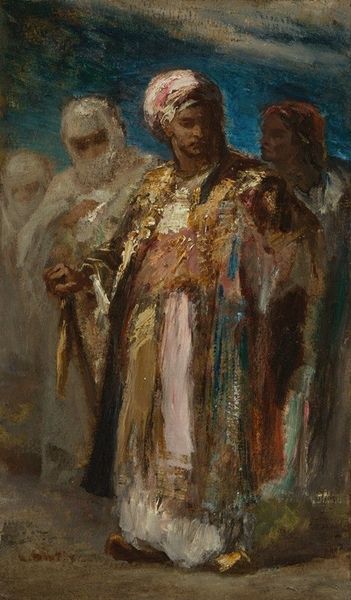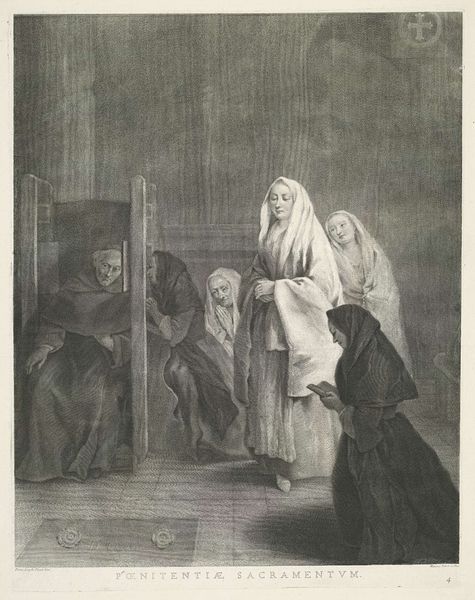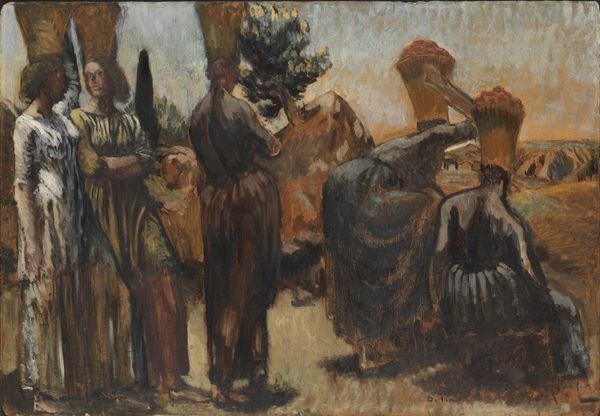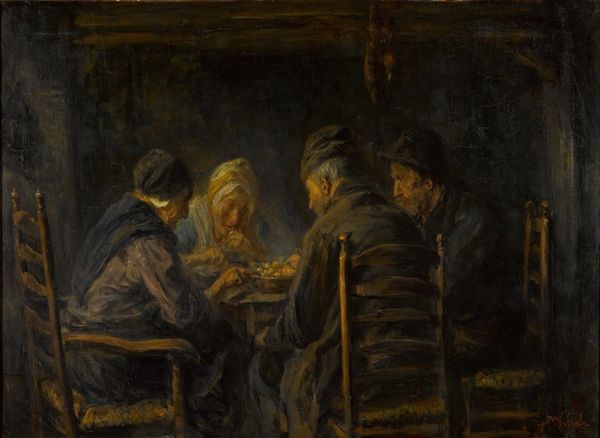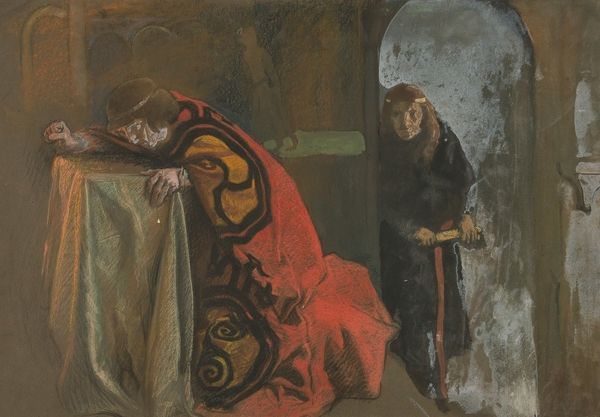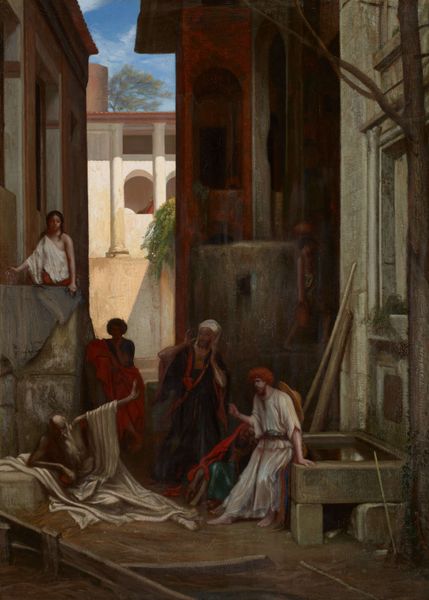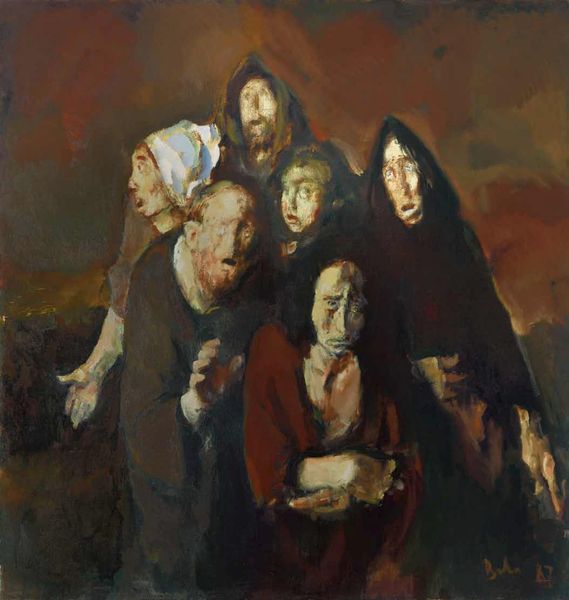
Dimensions: support: 1275 x 1155 mm frame: 1602 x 1470 x 125 mm
Copyright: © The estate of Sir William Rothenstein. All Rights Reserved 2010 / Bridgeman Art Library | CC-BY-NC-ND 4.0 DEED, Photo: Tate
Curator: Immediately, I’m struck by the painting's solemn atmosphere. The subdued palette really amplifies a sense of grief. Editor: This is Sir William Rothenstein's oil on canvas, titled *Jews Mourning in a Synagogue*, housed here at the Tate. It speaks volumes about the Jewish experience at the turn of the century. Curator: Absolutely, Rothenstein painted this scene, offering us a glimpse into the ritualistic mourning practices. The figures, draped in prayer shawls, seem almost cocooned in their grief. Editor: And it's important to consider Rothenstein's own background as a Jewish man, how he straddled the line between insider and outsider in representing this community. How does that position shape the narrative? Curator: That's a crucial point. Rothenstein's artistic choices reflect the complex dynamics between assimilation and cultural preservation prevalent at the time. Editor: Indeed, his painting prompts us to reflect on the universal experience of grief and the power of community in the face of loss. Curator: I agree. It's a poignant representation of shared sorrow and resilience. Editor: A somber meditation on the weight of history.
Comments
tate 7 months ago
⋮
http://www.tate.org.uk/art/artworks/rothenstein-jews-mourning-in-a-synagogue-n02116
Join the conversation
Join millions of artists and users on Artera today and experience the ultimate creative platform.
tate 7 months ago
⋮
In his memoirs Rothenstein recalled how he had gone by chance into Spitalfields Synagogue, and was gripped by the scene of mourning Jews. He was not allowed to paint in the Synagogue itself, so took a room nearby and persuaded some of the men to sit for him. Some of the models have been used twice in the picture: the two standing men appear to be the same person. Rothenstein was himself Jewish, and painted several scenes of contemporary Jewish culture in the early years of the century. The picture was first shown at the NEAC 1906 summer exhibition. Afterwards it went on to the celebration of Jewish life in Britain held at the Whitechapel Art Gallery. The picture was presented to the Tate in 1907 by Jacob Moser to commemorate that exhibition. Gallery label, April 1997
